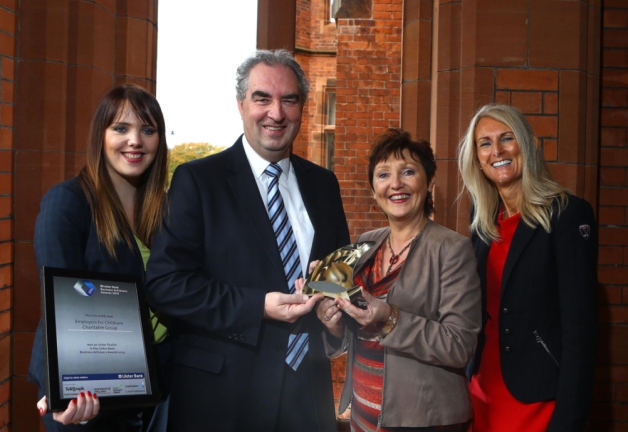Government Grants
Business Grants
Home Owner Programs
Federal Programs
About Us
Interrogative Anti-Submarine Warfare (IASW)
The Interrogative Anti-Submarine Warfare (IASW) program seeks to develop innovative solutions to dramatically close detect-to-engage timelines for Navy tactical ASW search systems.
Typically these are active sonar systems that have the ability to detect and localize submarines over large areas with the ability to prosecute the targets as needed.
End solutions identified by the IASW program may also apply for surveillance systems and future undefined long-range detection systems.
Currently, the intermediate step between detect and engage is consumed by a manned platform that flies to the possible contact position to re-acquire the underwater submarine target.
For ship systems, a helicopter is tasked to validate and engage the target.
For maritime patrol aircraft, the aircraft must break from its search (and drop altitude) to validate and engage the target.
As such, there is little tolerance for false alerts which must be investigated sequentially.
Further, the ability to handle multiple targets is limited.
A successful IASW program will identify technology and system concepts that permit rapid and near simultaneous interrogation of long-range alerts without the mission costs of a manned aircraft.
This will reduce the burden on operators and systems to correctly classify the target at long-range, and will provide engagement-quality localization for potential future standoff weapons.
Solutions must at least address ship-based ASW, but will be more attractive if they are extendable to maritime patrol aircraft and surveillance systems.
Proposers should consider solutions that permit rapid delivery of multiple proximity sensors capable of detecting, classifying, and communicating the presence or absence of a target.
The main technology components to consider should provide the following:
1. Delivery that is fast and which permits near-simultaneous interrogation of cued target positions; 2. Sensing that provides highly reliable detection and classification and; 3. Communication that provides robust message extraction from multiple long-range positions.
With rapid delivery, it is expected that small time-late target position uncertainties will permit near-target sensor emplacement.
This should lead to a rich set of signatures for classification automation.
Successful automation should broaden the range of data extraction approaches.
Communication is expected to be particularly challenging.Proposers must have existing, and in-place prior to execution of an award, approved capabilities (personnel and facilities) to perform research and development at the classification level they propose but at a minimum SECRET.DARPA-BAA-09-24, entitled Interrogative Anti-Submarine Warfare (IASW) is provided as an attachment to this solicitation notice and includes information on the area of interest, the submission process, proposal formats, as well as all other pertinent administrative and contractual information.
The BAA is attached as a Word Document File, IASW BAA 2009Mar11 Finalx.Administrative, technical, or contractual questions should be sent via email to BAA09-24@darpa.mil.
All requests must include the name, address, and phone number of a point of contact.
Amendment 1 to DARPA-BAA-09-24 Interrogative Anti-Submarine Warfare (IASW) The purpose of Amendment 1 to DARPA-BAA-09-24 Interrogative Anti-Submare (IASW) is to make the following changes:
1. Page 4, Part One, Overview Information, change the PROPOSAL DUE DATE from 20 May 2009 to 02 June 200 9. 2. Page 18, Section 4. 5, change the proposal due date from 20 May 2009 to 02 June 200 9. 3. BAA questions and answers are attached.
End of Amendment 1
Typically these are active sonar systems that have the ability to detect and localize submarines over large areas with the ability to prosecute the targets as needed.
End solutions identified by the IASW program may also apply for surveillance systems and future undefined long-range detection systems.
Currently, the intermediate step between detect and engage is consumed by a manned platform that flies to the possible contact position to re-acquire the underwater submarine target.
For ship systems, a helicopter is tasked to validate and engage the target.
For maritime patrol aircraft, the aircraft must break from its search (and drop altitude) to validate and engage the target.
As such, there is little tolerance for false alerts which must be investigated sequentially.
Further, the ability to handle multiple targets is limited.
A successful IASW program will identify technology and system concepts that permit rapid and near simultaneous interrogation of long-range alerts without the mission costs of a manned aircraft.
This will reduce the burden on operators and systems to correctly classify the target at long-range, and will provide engagement-quality localization for potential future standoff weapons.
Solutions must at least address ship-based ASW, but will be more attractive if they are extendable to maritime patrol aircraft and surveillance systems.
Proposers should consider solutions that permit rapid delivery of multiple proximity sensors capable of detecting, classifying, and communicating the presence or absence of a target.
The main technology components to consider should provide the following:
1. Delivery that is fast and which permits near-simultaneous interrogation of cued target positions; 2. Sensing that provides highly reliable detection and classification and; 3. Communication that provides robust message extraction from multiple long-range positions.
With rapid delivery, it is expected that small time-late target position uncertainties will permit near-target sensor emplacement.
This should lead to a rich set of signatures for classification automation.
Successful automation should broaden the range of data extraction approaches.
Communication is expected to be particularly challenging.Proposers must have existing, and in-place prior to execution of an award, approved capabilities (personnel and facilities) to perform research and development at the classification level they propose but at a minimum SECRET.DARPA-BAA-09-24, entitled Interrogative Anti-Submarine Warfare (IASW) is provided as an attachment to this solicitation notice and includes information on the area of interest, the submission process, proposal formats, as well as all other pertinent administrative and contractual information.
The BAA is attached as a Word Document File, IASW BAA 2009Mar11 Finalx.Administrative, technical, or contractual questions should be sent via email to BAA09-24@darpa.mil.
All requests must include the name, address, and phone number of a point of contact.
Amendment 1 to DARPA-BAA-09-24 Interrogative Anti-Submarine Warfare (IASW) The purpose of Amendment 1 to DARPA-BAA-09-24 Interrogative Anti-Submare (IASW) is to make the following changes:
1. Page 4, Part One, Overview Information, change the PROPOSAL DUE DATE from 20 May 2009 to 02 June 200 9. 2. Page 18, Section 4. 5, change the proposal due date from 20 May 2009 to 02 June 200 9. 3. BAA questions and answers are attached.
End of Amendment 1
Agency: Department of Defense
Office: Defense Advanced Research Projects Agency
Estimated Funding: Not Available
Office: Defense Advanced Research Projects Agency
Estimated Funding: Not Available
Obtain Full Opportunity Text:
DARPA-BAA-09-24 at FedBizOpps
Additional Information of Eligibility:
Not Available
Full Opportunity Web Address:
https://www.fbo.gov/index?s=opportunity&mode=form&id=3cbe90611add16e936a8fe9e6d8b8f79&tab=core&_cview=0
Contact:
BAA Coordinator
Agency Email Description:
BAA-09-24 Coordinator
Agency Email:
BAA09-24@darpa.mil
Date Posted:
2009-03-12
Application Due Date:
2010-03-10
Archive Date:
2010-04-09
Social Entrepreneurship
Spotlight
Childcare Charitable Group Named Top Social Enterprise

Employers For Childcare Charitable Group (EFCG), a Lisburn-based charity, has been crowned top Social Enterprise at the Ulster Final of 2014’s Ulster Bank Business Achievers Awards. EFCG seeks to “make it easier for parents with dependent children to get into work and to stay in work.”

